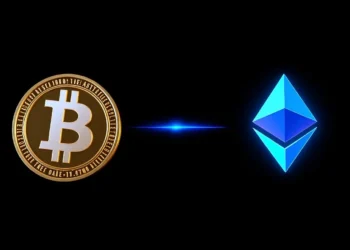Remember when Bitcoin Cash came about? That’s a hard fork in action. Blockchain tech can seem like magic. But underneath are clear concepts, and forks are one of them. If you’re into crypto, knowing what forks are is essential. They change the rules of the game. Let’s break it down!
What is a Blockchain Fork?
Blockchains are like digital ledgers. They record every transaction. But sometimes, these ledgers need updates. That’s where forks come in. It’s a change to the blockchain’s code.
Definition of a Blockchain Fork
A blockchain fork occurs when the rules of the blockchain change. It’s like upgrading a computer program. Forks can happen for a few reasons. Maybe there’s a bug that needs fixing. Or the community wants to add new features. This is a key event in blockchain tech.
Why Blockchains Fork
Blockchains fork to improve. These changes can fix problems. They might also add new abilities. Sometimes, the community doesn’t agree on the best way forward. This disagreement can cause a fork. Security is another reason for forks. They can patch up vulnerabilities.
Consensus Mechanisms and Forks
Consensus is how blockchains agree. Think Proof-of-Work or Proof-of-Stake. These systems ensure everyone’s on the same page. But what if they don’t agree? That’s when a fork might happen. Different ideas on consensus can split a chain.
Hard Forks: A Radical Change
Hard forks are a big deal. They create a new blockchain. It’s a split from the old one. Everyone needs to upgrade to the new version. If not, they’re on the old, separate chain.
Definition of a Hard Fork
A hard fork is a permanent divergence. It breaks compatibility with the older blockchain. Nodes that don’t upgrade can’t interact with the new chain. It’s a fresh start with new rules. It’s a major shift in the blockchain’s history.
Characteristics of a Hard Fork
Hard forks bring new rules. These rules aren’t compatible with the old ones. Every node must upgrade to follow them. If not, they’re stuck on the old chain. This can also create a new cryptocurrency.
Examples of Hard Forks
Bitcoin Cash (BCH) is a great example. It forked from Bitcoin (BTC). The reason? The community wanted bigger blocks. They thought it would make transactions faster. Ethereum (ETH) also had a hard fork after the DAO hack. This undid the hack and refunded the funds.
Soft Forks: A Gentle Upgrade
Soft forks are different. They’re more like a software update. The old version still works with the new one. It’s a less disruptive change to the blockchain.
Definition of a Soft Fork
A soft fork is a change that’s backward-compatible. Older nodes can still process new transactions. The new rules are stricter than the old ones. This makes it easier for everyone to stay on the same chain.
Characteristics of a Soft Fork
Soft forks are backward-compatible. This means older nodes don’t have to upgrade. The new rules are stricter than the old ones. But older nodes still see the new transactions as valid. It’s a more gentle update to the protocol.
Examples of Soft Forks
P2SH (Pay to Script Hash) was a soft fork in Bitcoin. It made transactions more flexible. Segregated Witness (SegWit) was another one. It fixed transaction malleability. Both improved Bitcoin without splitting the chain.
Hard Fork vs. Soft Fork: Key Differences
Hard forks and soft forks both change blockchains. But they do it in different ways. The main differences are compatibility and community impact. It’s crucial to understand these differences.
Compatibility
Hard forks aren’t compatible. Old nodes can’t process new transactions. Soft forks are. Old nodes see new transactions as valid. This makes soft forks less disruptive.
Community Impact
Hard forks can divide the community. Some people support the new chain. Others stick with the old one. Soft forks usually unite the community. Most people agree to the update.
Implementation Complexity
Hard forks are harder to implement. Everyone needs to upgrade. It requires strong community support. Soft forks are easier. Since they’re backward-compatible, adoption is smoother.
Navigating Blockchain Forks: Tips for Users
Forks can be confusing. What should you do when they happen? The most important thing is to stay informed. Then, secure your assets.
Staying Informed
Keep up with the news. Follow trusted sources in the crypto world. Understand the reasons behind the fork. Know how it will affect you and your holdings.
Securing Your Assets
Move your coins to a secure wallet. This gives you control during the fork. Some forks create new coins. You may need to take steps to claim them. Don’t leave your coins on an exchange during a fork!
Conclusion
Hard forks and soft forks are important upgrades. They change how blockchains work. Hard forks split the chain. Soft forks are more gentle. Understanding these concepts helps you navigate crypto. The future of blockchain will include more upgrades. Knowing the difference between hard forks and soft forks is essential. You’re now better prepared for the future of blockchain.

























